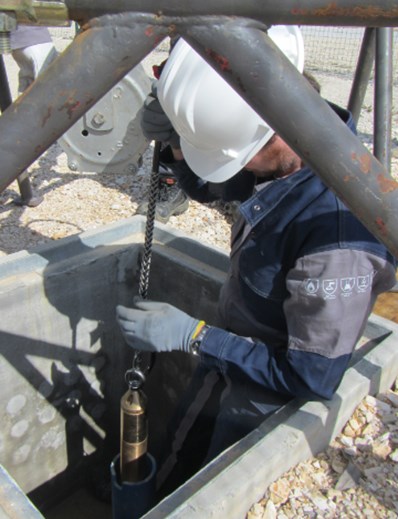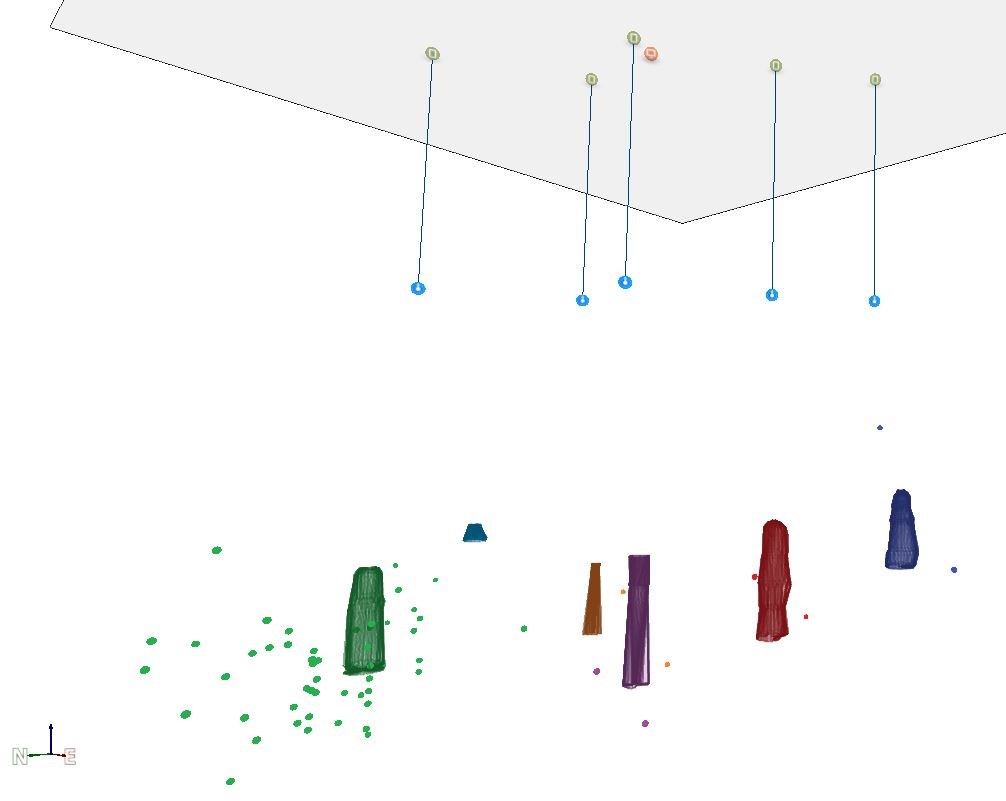
Microseismic monitoring applied to underground natural gas storage
Inerisassists gas storage operators in all risk expertise phases of the lifecycle of their project, from the design of the operation and the preparation of regulatory authorizations to the site closure and decommissioning. Services include quasi realtime geotechnical and microseismic monitoring to control the performance of the host rock. Monitoring solutions set up on two sites, with different geological contexts and implementation specifications, are described below
Context.
Underground storage of natural gas in large caverns or reservoirs is a key component of the energy capacity market. It consists in storing the gas produced during lowdemand periods and supplying the market during highdemand periods. This considerably limits risks of disruption at peak load times. Considering the field and regulatory constraints, microseismic monitoring technique is set up to meet specific objectives.
Installation of a downhole SYTMIS 3 - component retrievable microseismic probe
The first site consists of a 100.000 m3 cavern mined in a 160 m deep limestone layer, South of France. Microseismic monitoring is designed to fulfill two safety requirements: first, to control the overall stability of the storage cavern also in case of a regional natural seismic event and second, to detect local roof falls that could impact the artificial water curtain system located a few meters above.
The operator required to progressively upgrade a preexisting monitoring solution. Besides many improvements, Ineris updated the acquisition unit, allowing a drastic decrease in artefact triggering. Then gradual replacement of the preexisting downhole probes, suffering from interferences along their cables, by SYTMIS probes equipped with builtin amplifiers, considerably enhanced the signal-to-noise ratio and the processing of the waveforms. Testing of the system was done thanks to large block falls on surface.
Seismic files are automatically transmitted to Ineris data center to be processed, classified and made available through e.cenaris webmonitoring platform. A specific procedure is used to trigger an alarm if necessary.
The second site is situated in a moderate seismically active zone in South Europe. It comprises several large saltleaching caverns located below a 1000 m thick impermeable caprock. Ineris realized the design, installation and calibration of a modular microseismic monitoring network. Retrievable selfanchoring 3 component SYTMIS seismic probes were installed in deep boreholes in order to pass through the altered and attenuating first geological layers and to ensure good coupling with the surrounding rock for better detection. Smart-dual-mode (continuous and triggering) acquisition units were implemented on each distant platform, covering a 2 km2 area, and connected to a preexistent LAN for automated realtime transmission and remote management through e.cenaris also. Here calibration was done with surface blasts.

Top View of Site 2 - the salt caverns are projectedon the ground surface

3D location of microseismic events recorded on Site 2 deep storage salt caverns
Results.
Both monitoring systems and dataset have been managed for several years now. On Site 1, seismic files are artefacts generated by the surface anthropogenic activity. Typical waveforms are documented and easily classified. Any microseismic data following a detected regional seismic event in a 24 h range is examined with details as a potential rupture in the roof of the caverns.On Site 2, a few events of low magnitude ranging from -0.5 to 1 are recorded each month. 3D location is precise enough to assign events to a given cavern with an accuracy of a few ten meters in XY plane.
Here microseismic activity analysis revealed to be mainly related to caving processes associated to an additional cavern under development. No microseismic event has ever been detected in the higher part of the roof close to the caprock, proving the integrity of the geosystem.